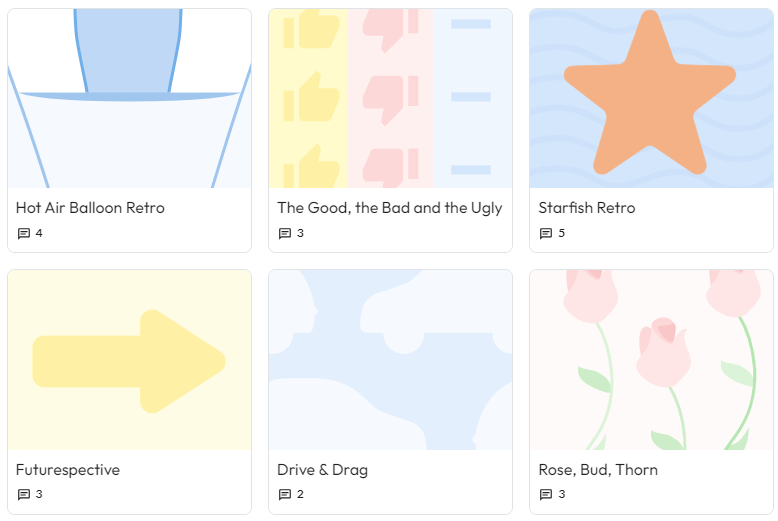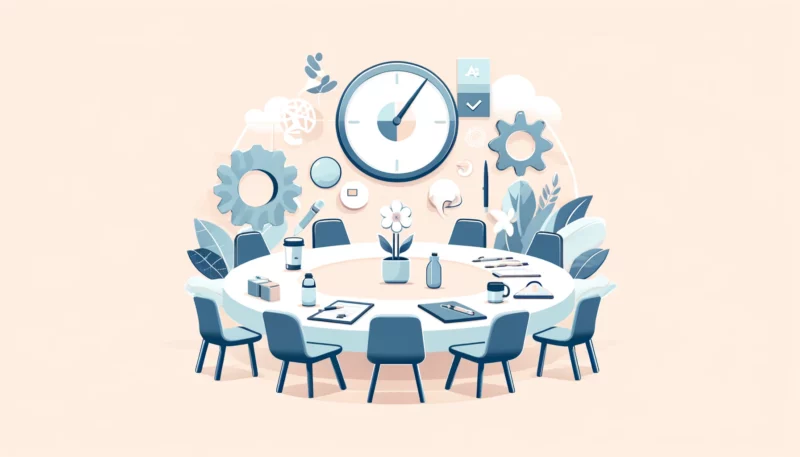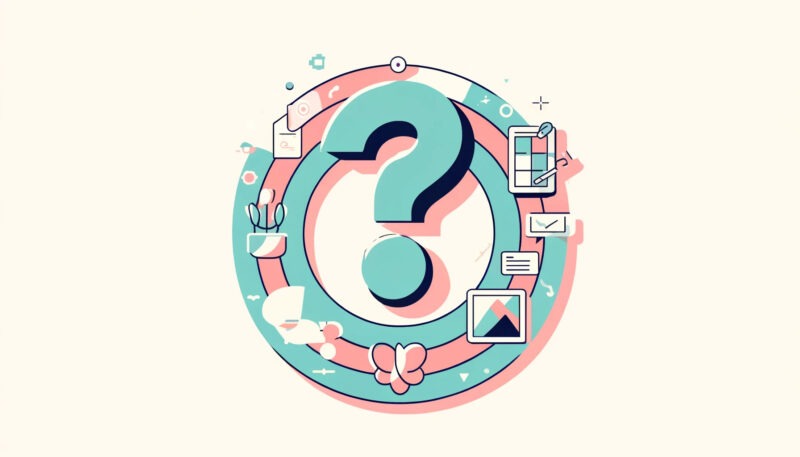SAFe® is an agile framework that combines proven methods and techniques with new cultural elements and leadership concepts. A central element of SAFe® is the Agile Release Train (ART). It is aligned with an organization's value chain and is tasked with continuously delivering value in the form of new product, software or hardware features. It consists of several teams.
To manage the ART, you need the so-called Release Train Engineer in SAFe®. I will show you what a Release Train Engineer is and which tasks and responsibilities he or she assumes. And: I'll tell you what questions you can expect in a job interview for a position as a Release Train Engineer in Agile and what salary you get in average.
What is a Release Train Engineer?
The Release Train Engineer in SAFe® is responsible for leading the Release Train – the team of agile teams. He ensures that everyone works together harmoniously and productively and adheres to the SAFe® processes. To this end, he coordinates the work and moderates cross-team meetings, for example. In this way, he promotes the value creation of the ART.
Release Train Engineer vs. Scrum Master
The Release Train Engineer is both a serving leader and coach for the train. This makes the position very similar to a Scrum Master, who is also a leader for his team. The Release Train Engineer role is simply responsible for a larger team that consists of multiple teams. Both know how agile methods can work in practice.
8 essential roles of the Release Train Engineer
First and foremost, Release Train Engineers in Agile are serving leaders. They communicate with stakeholders, help manage risk, and drive improvement. In doing so, they take on 8 essential roles of Release Train Engineers:
Coach
Release Train Engineers lead and mentor agile teams. In this way, they can constantly evolve to continuously deliver high value to the customer.
Organizer
To ensure that events such as the PI Planning Event do not get out of hand, Release Train Engineers carefully prepare them and run them themselves. Only in this way, the teams can achieve optimal results.
Problem Solver
One role of the Release Train Engineer is to solve problems in the ART. This may involve, for example, sourcing new resources for teams, aligning dependencies and responsibilities between teams, and coordinating external third parties such as suppliers.
Communicator
Another Safe Release Train Engineer task is to take on the role of a communicator. That is, he or she ensures that information flows clearly and transparently within and between teams.
Engineer
Release Train Engineers in SAFe® are responsible for implementing and adhering to engineering practices. For example, they ensure that code reviews and peer programming are performed, piloting is adhered to, and sufficient automation of test cases is implemented.
(KPI) Reporter
The role of the Release Train Engineer includes monitoring the progress of the project. He or she records these in regular reports.
Teacher
The Release Train Engineer takes on the role of a teacher. To ensure that members and teams are constantly building their skills, the Release Train Engineer teaches them, for example, how to combine Lean and Agile Management practices.
Feel Good Manager
As a Feel Good Manager, the Release Train Engineer in SAFe® ensures the well-being of his teams. In doing so, he creates an environment that motivates employees and keeps them healthy.
What skills does a Release Train Engineer in Agile need?
To take on these roles, a Release Train Engineer in Agile must have these skills:
Communication
Release Train Engineers are communicative. This allows them to communicate the importance of tasks to their teams in an understandable way. They give employees the ability to organize and manage themselves. And: Release Train Engineers use their communication skills to build lasting relationships with all stakeholders.
Organization
From tasks to goals to deadlines and responsibilities: Release Train Engineers are organized in every way. This way, they always know where and how to support their teams and keep projects moving forward.
Flexibility
Release Train Engineers in Agile are flexible when it comes to their tasks. They can easily switch between leading, managing and "serving" tasks.
In addition, Release Train Engineers in SAFe® have
- a high level of negotiation skills,
- a constant willingness to learn,
- a critical mindset,
- an open ear, and
- a high level of empathy.
Certification and Salary of a Release Train Engineer in SAFe
A Safe Release Train Engineer training takes about 3 days – if you already have agile experience. The Safe Release Train Engineer certification will cost you around 2100 Euro. Depending on the provider sometimes a little more or a little less.
Once you have successfully completed the training, you can start your first job. The Release Train Engineer salary (in Europe!) averages around 55,000 euros annually. With more experience and project responsibility, the salary increases.
You can can find more information on the question how much does a Scrum Master make following the link, by the way.
Release Train Engineer interview questions
The Release Train Engineer role combines a high degree of different professional competencies and social skills. It is therefore difficult to discern which interview questions for Release Train Engineers may appear in a job interview. We've collected several possible questions you can prepare for:
Question:
"How do you handle it when one team in the train performs significantly worse than others?"
Possible answer:
Basically, as a Servant Leader, my approach to this should of course first be to help people help themselves. At best, I can help the Scrum Master to solve the problems himself.
I myself as a Scrum Master would definitely see well-prepared, focused retros as the core element here. A bit more concrete: First of all, I check if a team is really underperforming. To do that, I look at the basis for that assessment. Is the statement made based on the velocity of the team (because that would be a poor basis) or what is the basis for it? Then I observe team members and work steps - and this over a longer period of time. I select individual situations that I discuss with the team and ask for an assessment. Together with the team, I discuss where improvements are possible.
The goal is to find a clear structure or to improve the ability to act. This is possible, for example, with the Cynefin framework . This helps to make decisions in uncertain situations. If the one right way does not emerge in the conversation, one tries to uncover the most efficient way through trial-and-error. You work your way to the solution iteratively, trying to improve performance with the team.
Question:
"A big challenge for us right now is networking our ART's teams with the other release trains. How would you approach something like that?"
Possible answer:
First, communication is critical. Release Train Engineers should be highly skilled in this area. Second, it is a matter of distributing responsibility among all participants and creating a common understanding of the ARTs. Pair programming is a classic measure for this, as are Agile Release Train overarching events – such as a "Book Club" in which relevant literature is presented and discussed.
Here are a few more interview questions to help you prepare for a job interview:
Customers: How do you respond when the customer is unhappy with the latest release?
People & Hiring: How do you recognize good Scrum Masters, Agile Coaches and Product Owners? What are good evaluation criteria?
Tools: What are your favorite tools for agile collaboration, workshops, value stream mapping and Health Checks etc.?
Values: How do you organize teams to create high customer value? What is an important learning from your career so far?
Skills: What have you been particularly good at as a Release Train Engineer or Agile Coach so far? Give examples!
Release Train Engineer SAFe® – Conclusion
Release Train Engineers in SAFe® play a crucial role in enabling ARTs to generate high added value for customers. To ensure that not only the Release Train Engineers but also all other stakeholders turn the right screws, your entire organization must think and work in an agile way. In other words, the agile transformation must be complete. Our Project Scagile, we show you which 7 mistakes you should avoid at all costs during an agile transformation. Take a look, the workshops are free of charge.
Most Agile Coaches and Scrum Masters run in circles...
...fixing superficial symptoms. Time to use psychology to foster sustainable mindset change.








